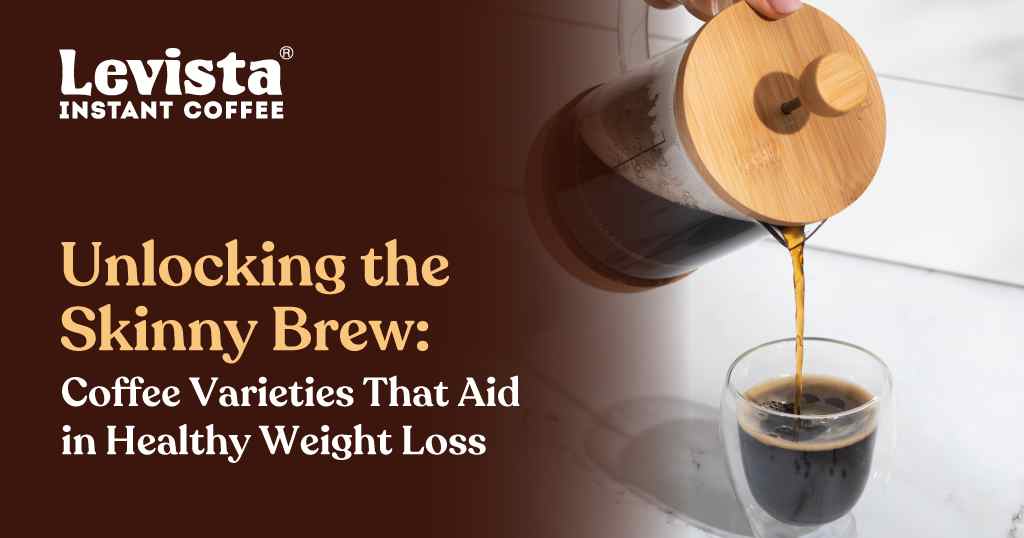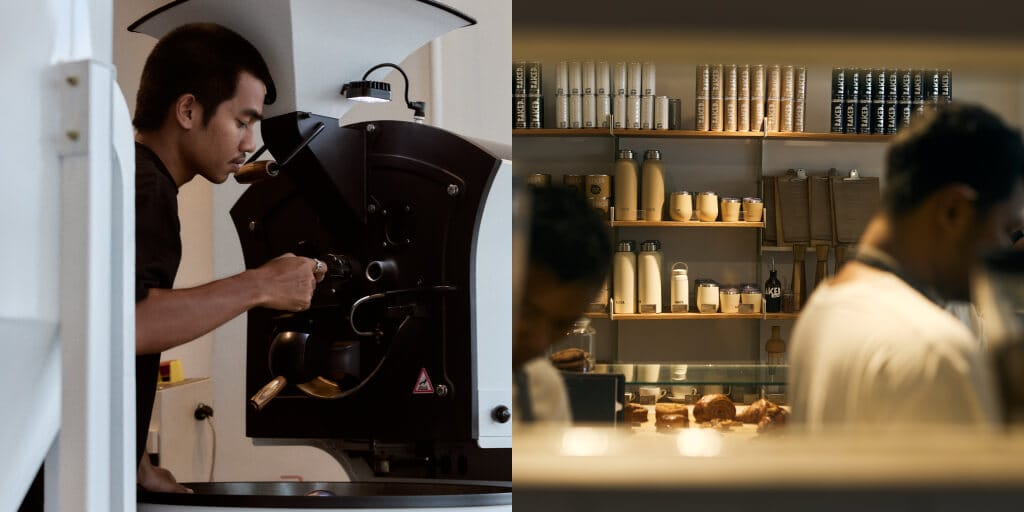Quality is a hallmark of specialty coffee. Roasters take pride in sourcing exceptional lots that highlight diverse flavour profiles – something consumers are increasingly seeking.
But as market competition grows fiercer, connecting with new audiences and adding value to menu offerings becomes more challenging. Rising coffee prices and inflation rates only intensify these issues, meaning roasters must market their coffees more effectively, especially when it comes to high-end micro lots and award-winning coffees.
These premium offerings require a more strategic approach to storytelling and customer engagement. I spoke with Weihong Zhang, 2024 US Brewers Cup Champion and the founder of BlendIn Coffee Club in Houston, Texas, to learn how his team curates and communicates the value of exceptional coffees.
You may also like our article on why coffee shops need to focus more on milk quality.

Despite rising costs, demand for exceptional coffee is growing
Over the past year, green coffee prices have surged, reaching record highs in February 2025. To manage cash flow effectively, roasters need to pass some of these additional costs onto consumers, especially while global energy and food prices remain high.
A recent UN FAO report projects that up to 80% of rising coffee costs will reach EU consumers within 11 months and US consumers in just eight months. The effects are expected to last for four years, signalling that further increases are ahead. Recent US tariffs will only drive prices higher in the coming weeks and months, too.
For roasters and importers, this means staying agile and adaptable is more important than ever – often through diversifying origins to balance quality and cost. Some roasters, such as BlendIn Coffee Club, a specialty coffee roaster that operates two cafés in Houston, Texas, have long served premium coffees, helping market and drive demand for high-end varieties like Gesha. But the roaster also diversifies its offerings to balance quality and price accessibility, sourcing from a range of origins.
New opportunities for roasters
As the C price has risen, the gap between specialty and commercial-grade coffee has narrowed. This presents an opportunity for specialty roasters to attract new customers who are now willing to spend slightly more for significantly better quality coffee.
Data from the 2024 Specialty Coffee Transaction Guide demonstrates that the demand for high-quality coffee remains strong, even amid price pressure. The report shows that the median freight on board (FOB) price for 84+ lots under 1,000 lbs rose from US $4 to US $5/lb between 2018/19 and 2023/24.
Many consumers will also shift their buying behaviour to adapt to higher retail coffee prices, with an increase in at-home consumption expected. Specialty coffee roasters can then leverage the opportunity to grow their retail and e-commerce channels with high-end offerings for home brewers.

Global markets are driving demand for high-end micro lots
In mature specialty coffee markets like North America, Europe, Australia, and Japan, consumers are accustomed to paying more for quality – and consumption continues to rise.
Meanwhile, specialty coffee is booming in major cities across Southeast Asia, Eastern Europe, and the Middle East. In Shanghai, for example, there has been an explosion of high-end cafés in recent years.
“I travel a lot to cities like Tokyo, Taipei, and Shanghai, and the specialty coffee scene has been growing rapidly in these places,” says Weihong Zhang. He is the 2024 US Brewers Cup Champion, notably winning with a decaf coffee, and the founder of BlendIn Coffee Club. “In Shanghai alone, nearly 70% of cafés now serve Gesha, which signifies the value that consumers increasingly place on status, quality, and exclusivity.
“As a US roaster, we get frequent requests from Asian buyers to ship them high-quality coffees through our international connections.”
Weihong attributes this growth to the growing consumer appreciation for coffee as an artisanal product. Consumers increasingly want to know about origin, processing, and varieties – as well as how these factors contribute to flavour and value.
BlendIn’s participation in high-profile auctions like Best of Panama – where coffees fetch record-breaking prices – underscores this. But more importantly, the brand uses its auction coffees to help educate and inspire customers.
“It’s becoming more and more important for roasters to choose the right platform for these coffees to drive consumer interest in quality and their understanding of why these lots cost more,” Weihong says.
The roaster’s Auction Series is a curated lineup of rare, competition-grade coffees offered in limited quantities through BlendIn’s cafés and online shop, tapping into the demand for ultra-rare and premium coffees.

Introducing exceptional coffees to customers
As interest in competition-winning coffees grows, roasters have an opportunity to stand out by offering more immersive, educational experiences.
“Roasters are working more closely with producers to develop distinctive flavour profiles that reflect terroir and variety,” Weihong says. “We’re seeing more unique varieties like Wush Wush, Sidra, Laurina, and Ethiopian landraces such as 74158, 74110, and 74112 becoming more common in cafés, alongside classic high-end coffees like Gesha.
“These coffees offer clarity and complexity that stand apart from commercial-grade offerings. What ultimately makes high-end coffees truly valuable is their unique origin, the producer’s craft, and the scarcity that comes with exceptional terroir.”
Emphasising flavour
Weihong’s own coffee journey began with a moment of flavour discovery.
“Back in 2015, I had this ‘aha’ moment with a cup of Kenyan coffee; I didn’t know coffee could taste like that. It was like blackberry with brown sugar: intense, vibrant, and so clear. That one cup made me want to learn everything about coffee. The more I explored, the deeper my passion grew.”
Because many of these lots are small in volume and taste different from traditional profiles, BlendIn focuses on customer education and transparency.
“Customers often ask, ‘Why is this coffee so expensive?’ We explain that it’s rare – used in or awarded at competitions – and not something you can easily find. Our baristas are trained to dial these coffees in properly and share that knowledge with customers. That way, they can learn how to brew it at home and what kind of flavours to expect. It creates a more meaningful experience around the cup.
“With higher-quality coffees, you don’t usually get dark chocolate notes because of the lighter roasting profiles. Instead, you get floral aromatics and more citric acidity,” he adds. “If someone’s not used to that, our baristas help guide the experience so the acidity becomes juicy and balanced, not sour.”

How can roasters showcase unique coffees?
In a café setting, design and service play a big role in how exceptional coffees are perceived. At BlendIn Coffee Club, high-end offerings are served at a dedicated slow bar, where baristas can engage more deeply with customers.
These coffees are also served in a special set of drinkware, including the Origami Sensory Cup that Weihong has used in competitions, to enhance aroma, texture, and overall sensory clarity. Every element is designed to reinforce the idea that these coffees are different and worth savouring.
Weihong explains how BlendIn also takes a collaborative approach to sourcing rare coffees – something that the roaster communicates to customers.
“We participated in the 2024 Best of Panama auction and successfully bid on three incredible lots,” he tells me. “We won GN-07 Absolu Adaura from Adaura Coffee at US $1,804.88/kg, GN-18 La Higa Private Reserve Janson Gesha from Janson Coffee at US $822/kg, and GW-17 Flair Gesha Washed from Mil Cumbres at US $569.65/kg. These lots were split with two other roasters – oma Coffee Roaster in Hong Kong and Archers Coffee in the UAE.
“This kind of collaboration helps make ultra-rare coffees more accessible for all of us. It also prevents unnecessary competition in the same local market and introduces our brand to new international audiences. Now, customers in Houston, Hong Kong, and Dubai can experience the same lot in different ways.”
Generally speaking, auction and competition-winning coffees are only available in small quantities, making them less accessible to consumers. Weihong tells me that BlendIn Coffee Club aims to bridge this gap through transparency by integrating education into its service model for all coffees.
Ultimately, this knowledge sharing can help customers feel more connected to these coffees and provide direct insight into the work that roasters and baristas are so passionate about.
Leveraging industry events
Beyond cafés, industry events offer roasters a chance to showcase their finest coffees and expand their brand presence.
At the 2025 Specialty Coffee Expo in Houston, BlendIn Coffee Club will feature coffees from 12 producers around the world at booth 840. Each lot will showcase a different region, process, or variety.
“What makes this year even more special is that several of the producers are joining us in Houston,” Weihong says. “It’s rare for consumers and industry professionals in the US to hear directly from the people growing these coffees, so we’re excited to host side-by-side tastings and share the stories behind each lot. It’s not just about showcasing great coffee; it’s about building real connections between origin and cup.”

Exceptional coffees continue to define the upper edge of specialty coffee, raising quality expectations and pushing the boundaries of flavour.
But simply serving these coffees isn’t always enough to introduce them to consumers, especially more “traditional” drinkers. By leveraging different platforms, roasters can make sure these unique lots stand out.
Enjoyed this? Then read our article on how demand for micro lots is shifting.
Photo credits: BlendIn Coffee Club
Perfect Daily Grind
Please note: BlendIn Coffee Club is a sponsor of Perfect Daily Grind.
Want to read more articles like this? Sign up for our newsletter!
Escape from it all while still enjoying the comforts of home. Discover Expedia's array of vacation rental options—from cozy city apartments to picturesque beachfront villas.
Source link



